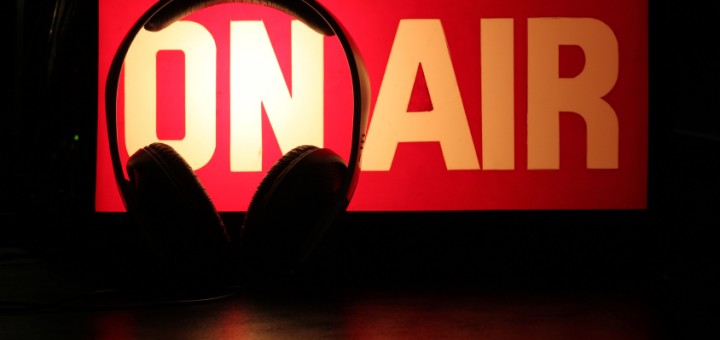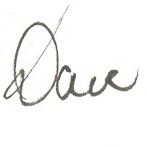I don’t often write about radio.
At its best, radio is theatre of the mind. It provides only sound. It requires the listener’s imagination to create the pictures that go with the sound. Those images are unique to every listener…as is their imagined understanding of the person on the radio to whom they’re listening. Depending on your context — where you’re listening, the last song you heard, the mood you’re in, your view of the world around you — and depending on what I’m talking about, the form in which I present it, the language I use, and (of course) my ability to keep you interested, your mind will begin to paint you a picture of me. It probably won’t be accurate, by the way. You could think me years younger or years older than my actual age…you could imagine me with hair…and there’s a good chance your mind will decide I must be taller than I actually am.
If my voice makes you imagine that I look like George Clooney, well, I’m just gonna roll with that. If you picture me more like Steve Buscemi, you roll with that — and keep it to yourself. Either way, there’s some magic involved when your mind fills in the visuals that radio doesn’t provide. That’s why I seldom write about how radio is made: it might spoil the magic.
Every once in awhile, though…
I realized a few days ago that the fiftieth — fiftieth! — anniversary of my, um, relationship with radio came and went in late February and I missed it entirely. Understandable, I guess…at the time, we were less than a month away from making our move to Salt Spring Island, so I was a bit preoccupied. What reminded me was a Facebook post announcing an event to commemorate the “50th anniversary” of CKLW Radio, to be held in the Detroit suburb of Mount Clemens, Michigan this Saturday.
CKLW (for non-radio junkies) was a Border Blaster. Most Border Blasters were high-powered Mexican stations on the AM band in border cities like Tijuana or Juarez, broadcasting in English, playing mostly Top 40 music, whose sole purpose was to capture American audiences. Wolfman Jack made his name on Mexican Border Blasters XERF and XERB. There were others as well — X-Rock 80 (XEROK) and XETRA. And one more, in Windsor, Ontario, Canada — CKLW. The Big 8.
CKLW shared a frequency — 800 kHz — with XEROK. Broadcasting at the maximum allowed power for a Canadian or American AM station, 50 thousand watts, CKLW should’ve been buried by XEROK, which put out five times that power from its transmitter in Ciudad Juarez, just across the Rio Grande from El Paso, Texas. Yet at night, CKLW’s signal reached deep into Oklahoma — which is a lot farther away from Windsor than it is from Juarez.
As a radio station, CKLW is closer to its 100th anniversary than its 50th, having signed on in 1932. And this year will mark the 33rd anniversary of CKLW not being The Big 8. Indeed, the people organizing this event themselves missed the actual 50th anniversary they plan to commemorate — April 4, 1967. On that day, CKLW adopted the “Boss Radio” format developed by programmers Bill Drake and Ron Jacobs (at a radio station in Fresno, California of all places) with which they’d taken KHJ to the top of the ratings in Los Angeles. Prior to Boss Radio, Top 40 stations played at least 40 and often 50, 60 or 75 current hit records per week. Disc jockeys talked a lot, station jingles were long, and the whole thing could sound sloppy and cluttered.
Drake and Jacobs set out to get rid of the clutter. They cut the playlist to 33 records — the top 30 hits plus 3 “hitbounds”. They tightened the rotation, so that the week’s biggest hits played every 90 minutes. (In 1968, Richard Harris recorded an improbable, 5-minute-11-second-long piece of crap called “MacArthur Park” and it went to number 2. Just for laughs, I used to turn up the volume every 90 minutes, seconds before The Big 8 would play it, just to make my mother scream at me to “turn that racket down!!!!” I didn’t even like the bloody song, but it was guaranteed to get under Mom’s skin so, yeah, obviously, you do that when you’re 14. And it was easy..the “Boss Radio” format was that predictable.) They cut back on the talk (the jocks could say whatever they wanted as long as they said it in ten seconds or less), they sliced the jingles from a minute to about 2 seconds, and (as the station ID voice would say at precisely the top of every hour), the hits just kept on coming.
It took two years, almost to the day, for the Boss Radio format to find its way from Los Angeles to stations in San Francisco, Boston, Philadelphia and finally to The Big 8. And The Big 8 made the format huge.
At its peak, CKLW was the third-most-listened-to radio station in North America, with an audience nearly 15 times the population of Windsor and nearly twice the population of neighbouring Detroit. It was number one in Detroit, number one in Toledo, number one in Cleveland. It was responsible for me (and many others) abandoning my “respectable” childhood dreams of what-I-wanted-to-be-when-I-grow-up (lawyer) and deciding to pursue a career in radio (there’s an oxymoron!) instead. My parents were mortified. I was transfixed.
The Big 8 had a huge impact on millions of teenagers and on pop culture. This month’s anniversary event will celebrate that, and will undoubtedly give much of the credit to the Drake-Jacobs Boss Radio format. But the format was not what made The Big 8 great. Credit for that goes to three extraordinary individuals — and to the time and place in which the station existed. For CKLW was as much a product of its times as an influence on them.
More on that tomorrow.







Leave a Reply